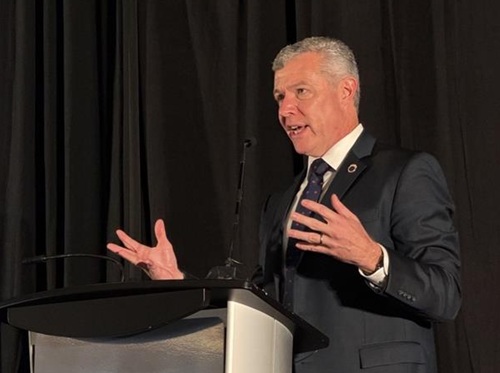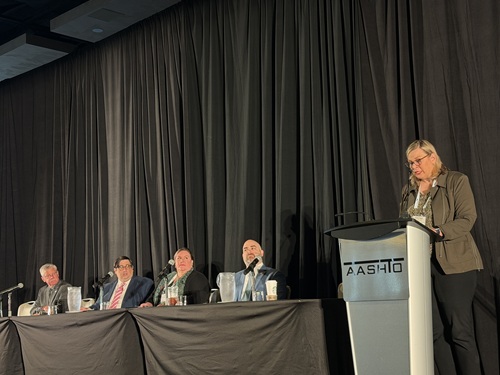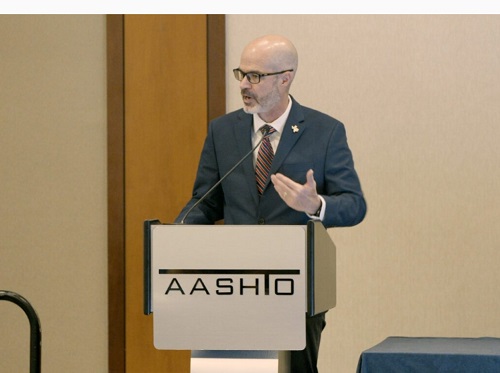Marc Williams (above), executive director of the Texas Department of Transportation, noted at an American Association of State Highway and Transportation Officials rail conference that better “collaboration and alignment” between the states and federal transportation agencies will be critical to the delivery of rail projects now and in the future.
[Above photo by AASHTO]
“Amid historic funding levels and efforts to recover from the [COVID-19] pandemic and ongoing economic challenges, it’s really an important time for us to continue the progress in our industry in partnership with the U.S. Department of Transportation and the Federal Railroad Administration,” explained Williams at the AASHTO Council on Rail Transportation 2024 Legislative Meeting in Washington, D.C.
“The historic funding resources that came through the IIJA [Infrastructure Investment and Jobs Act] means it is a pivotal moment now for us to focus,” said Williams, who also serves as the chair of AASHTO’s rail council.

“We have to continue working to expedite the delivery of projects, and not just those projects that may be funded through the IIJA but projects that are also administered through many other funding programs [federal agencies] have with the states,” he said.
To do that requires “better collaboration and alignment of processes” between those agencies and the states, Williams noted.
“I think this is an area that that we know that our partners at USDOT are working on; to try to better align the processes between the different modal administrations with the USDOT,” he said. “I think it’s still a bit of a challenge for us at the state DOT level that there’s not a common set of processes between FRA and FHWA [the Federal Highway Administration] and the FTA [Federal Transit Administration].
The guidelines that you have to follow for those administrations can vary significantly.”
That alignment is critical, Williams noted, as many transportation infrastructure projects funded by the IIJA often have more than one modal component.
“With the IIJA comes a lot of other work that frequently has rail, highway, and other modal interactions,” he explained. “That’s why we must look at where there may be opportunities and where there are challenges for us to work together better to overcome.”
That collaboration and alignment will only become more critical in the days ahead as planning begins on the next round of surface transportation funding reauthorization, Williams added.
“[Though] we’re in the middle of the throes of the IIJA, but it’s actually getting time to begin talking about reauthorization again,” he said. “So now we need to begin to ‘frame up’ some of the very important policy positions as Congress begins to talk about what might be in a future reauthorization program. That is going to an underlying theme for our conversations moving forward.”
 Top Stories
Top Stories
Collaboration Touted at AASHTO’s Third Safety Summit
October 31, 2025 Top Stories
Top Stories

